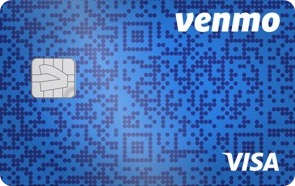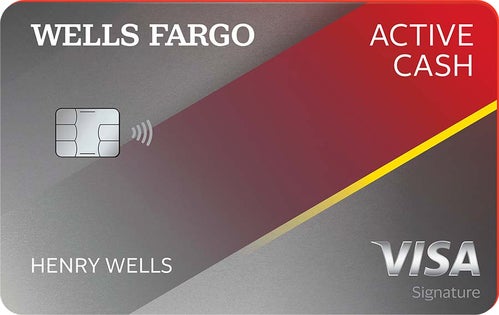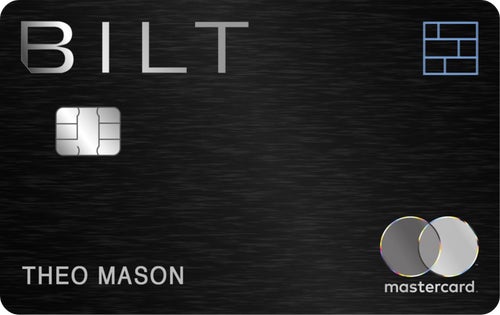A new month means a lot of things, including for many people, another round of utility bill payments. While most people likely reach for their debit card, using a credit card instead could provide some breathing room if you need extra time to make a payment.
“Utilities can amount to a significant monthly expense for people,” credit expert Mark Reese said. “Using a credit card to pay for these allows you to earn back some of the cost in the form of rewards, which could be more money back in your pocket or points towards a future vacation.”
But be warned: Most utility providers charge a convenience fee to use your credit card to pay a bill. This may be a flat-rate charge, usually less than $5, or a percentage of your bill. If you’re not in a financial pinch and are just focused on the rewards, you’ll want to make sure the rewards will exceed the extra cost of using a credit card to pay for your utilities. If you’re looking for a good credit card to fit the bill, consider these options.
The Venmo Credit Card* is one of the few credit cards that offers you some flexibility in your rewards. You can earn 3% rewards in your highest eligible spending category, one of which is bills and utilities. Other options include transportation, travel, groceries, entertainment, dining and nightlife, health and beauty, and gas. In the case of the $80 electric bill with a $2.95 surcharge, you could earn up to $2.49 in rewards with this card. While it’s not exactly a profit in this case, it has the potential to be so if the bill itself is higher or the surcharge is lower.
For example, with a $120 bill and a $2.95 surcharge, you could earn up to $3.69 in rewards with the Venmo Credit Card -- netting you 74 cents. That can add up over time. Apply your own utility bills and provider fees to see if this route is worth it.
You’ll also earn 2% rewards automatically on your second highest eligible spending category. For everything else, you’ll earn 1%.
Because the higher rewards rates are applied automatically based on your spending in any given month, you’ll have to be sure to not use this credit card for other eligible spending categories that may exceed your spending on bills and utilities. This is one of the few credit cards that allows you to redeem your credit card rewards as cryptocurrency or as cash back.
We rate credit cards using our Rewards / Travel methodology for cards tailored to earning rewards. We focus on each card’s reward potential, the value you get compared to the card’s cost, the benefits and the card’s rates and fees. Credit card issuers have no say or influence in our ratings. How we rate credit cards
- Intro Balance Transfer APR
- N/A
- Intro Purchase APR
- N/A
- Regular APR
- 20.24%, 26.24%, or 29.24% Variable
- Balance Transfer Fee
- N/A
The Venmo Credit Card* is one of the few credit cards that offers you some flexibility in your rewards. You can earn 3% rewards in your highest eligible spending category, one of which is bills and utilities. Other options include transportation, travel, groceries, entertainment, dining and nightlife, health and beauty, and gas. In the case of the $80 electric bill with a $2.95 surcharge, you could earn up to $2.49 in rewards with this card. While it’s not exactly a profit in this case, it has the potential to be so if the bill itself is higher or the surcharge is lower.
For example, with a $120 bill and a $2.95 surcharge, you could earn up to $3.69 in rewards with the Venmo Credit Card -- netting you 74 cents. That can add up over time. Apply your own utility bills and provider fees to see if this route is worth it.
You’ll also earn 2% rewards automatically on your second highest eligible spending category. For everything else, you’ll earn 1%.
Because the higher rewards rates are applied automatically based on your spending in any given month, you’ll have to be sure to not use this credit card for other eligible spending categories that may exceed your spending on bills and utilities. This is one of the few credit cards that allows you to redeem your credit card rewards as cryptocurrency or as cash back.
We rate credit cards using our Rewards / Travel methodology for cards tailored to earning rewards. We focus on each card’s reward potential, the value you get compared to the card’s cost, the benefits and the card’s rates and fees. Credit card issuers have no say or influence in our ratings. How we rate credit cards
- Intro Balance Transfer APR
- N/A
- Intro Purchase APR
- N/A
- Regular APR
- 20.24%, 26.24%, or 29.24% Variable
- Balance Transfer Fee
- N/A
Wells Fargo Active Cash® Card
The Wells Fargo Active Cash® Card is a good runner up for rewards value on your utility payments. You earn 2% cash rewards on your transactions -- you don’t have to worry about categories. While there will be less opportunity to yield a net profit with this card than with the Venmo Credit Card due to the lower rewards rate, this card offers a consistent rate that will be able to put you in the green in the right scenarios.
This is also a good option if you need a little breathing room, thanks to its introductory APR offer. You can take advantage of 0% intro APR on purchases for 12 months from account opening (20.24%, 25.24% or 29.99% variable APR thereafter). This means that as long as you make all of your minimum payments on time during this promotion, you won’t incur interest charges. You won’t need as much cash upfront to pay your utility bills if you go this route, but you’ll want to make sure to pay off the balance before the end of the promotion to avoid racking up debt.
Your utility bills can also help you reach the spending threshold to earn the welcome offer. For more details, see our full review of the Wells Fargo Active Cash Card.
Pros
Earn unlimited 2% cash rewards on purchases
Easy-to-earn welcome bonus
No annual fee
Introductory APR offer on purchases and qualifying balance transfers
Up to $600 in cell phone damage or theft protection subject to a $25 deductible
Cons
No outstanding cardholder perks or statement credits
3% foreign currency conversion fee
Rewards must be redeemed in $20 or $25 increments for some redemption options
We rate credit cards using our Rewards / Travel methodology for cards tailored to earning rewards. We focus on each card’s reward potential, the value you get compared to the card’s cost, the benefits and the card’s rates and fees. Credit card issuers have no say or influence in our ratings. How we rate credit cards
- Intro Balance Transfer APR
- 0% intro APR for 12 months from account opening on qualifying balance transfers
- Intro Purchase APR
- 0% intro APR for 12 months from account opening
- Regular APR
- 20.24%, 25.24%, or 29.99% Variable APR
- Balance Transfer Fee
- up to 5%, min: $5
The Wells Fargo Active Cash® Card is a good runner up for rewards value on your utility payments. You earn 2% cash rewards on your transactions -- you don’t have to worry about categories. While there will be less opportunity to yield a net profit with this card than with the Venmo Credit Card due to the lower rewards rate, this card offers a consistent rate that will be able to put you in the green in the right scenarios.
This is also a good option if you need a little breathing room, thanks to its introductory APR offer. You can take advantage of 0% intro APR on purchases for 12 months from account opening (20.24%, 25.24% or 29.99% variable APR thereafter). This means that as long as you make all of your minimum payments on time during this promotion, you won’t incur interest charges. You won’t need as much cash upfront to pay your utility bills if you go this route, but you’ll want to make sure to pay off the balance before the end of the promotion to avoid racking up debt.
Your utility bills can also help you reach the spending threshold to earn the welcome offer. For more details, see our full review of the Wells Fargo Active Cash Card.
Pros
Earn unlimited 2% cash rewards on purchases
Easy-to-earn welcome bonus
No annual fee
Introductory APR offer on purchases and qualifying balance transfers
Up to $600 in cell phone damage or theft protection subject to a $25 deductible
Cons
No outstanding cardholder perks or statement credits
3% foreign currency conversion fee
Rewards must be redeemed in $20 or $25 increments for some redemption options
We rate credit cards using our Rewards / Travel methodology for cards tailored to earning rewards. We focus on each card’s reward potential, the value you get compared to the card’s cost, the benefits and the card’s rates and fees. Credit card issuers have no say or influence in our ratings. How we rate credit cards
- Intro Balance Transfer APR
- 0% intro APR for 12 months from account opening on qualifying balance transfers
- Intro Purchase APR
- 0% intro APR for 12 months from account opening
- Regular APR
- 20.24%, 25.24%, or 29.99% Variable APR
- Balance Transfer Fee
- up to 5%, min: $5
U.S. Bank Cash+® Visa Signature® Card
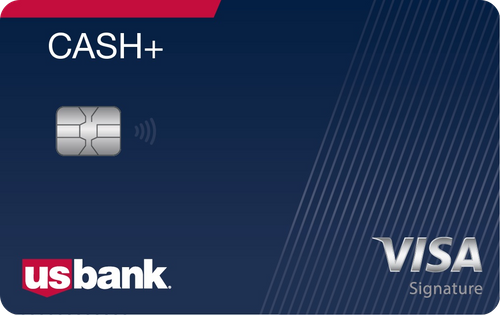
You can tailor the U.S. Bank Cash+ Visa Signature card to match your spending, including when it comes to your utility bills.
Choose to earn 5% cash back (on up to $2,000 spent in combined eligible purchases each quarter, then 1%) for your utility bills, in addition to one other eligible 5% cash-back category. It also earns 2% cash back on one eligible “everyday” category of your choice. That’s a lot of earning potential for a credit card that doesn’t charge an annual fee.
With its quarterly spending limit, you’re able to earn a maximum of $100 each quarter in combined purchases at the 5% rate. Once you hit that mark, your rewards will fall to 1%. However, $100 is potentially more than enough to cover any convenience fees you’d incur by paying with your card. There’s also an easy-to-reach welcome offer that could potentially offset those fees for a whole year or more.
We rate credit cards using our Rewards / Travel methodology for cards tailored to earning rewards. We focus on each card’s reward potential, the value you get compared to the card’s cost, the benefits and the card’s rates and fees. Credit card issuers have no say or influence in our ratings. How we rate credit cards
- Intro Balance Transfer APR
- 0% intro APR Intro APR on balance transfers for the first 15 billing cycles.
- Intro Purchase APR
- 0% intro APR Intro APR on purchases for the first 15 billing cycles.
- Regular APR
- 19.49% – 29.74% (Variable)
- Balance Transfer Fee
- Either 3% of the amount of each transfer or $5 minimum, whichever is greater.
You can tailor the U.S. Bank Cash+ Visa Signature card to match your spending, including when it comes to your utility bills.
Choose to earn 5% cash back (on up to $2,000 spent in combined eligible purchases each quarter, then 1%) for your utility bills, in addition to one other eligible 5% cash-back category. It also earns 2% cash back on one eligible “everyday” category of your choice. That’s a lot of earning potential for a credit card that doesn’t charge an annual fee.
With its quarterly spending limit, you’re able to earn a maximum of $100 each quarter in combined purchases at the 5% rate. Once you hit that mark, your rewards will fall to 1%. However, $100 is potentially more than enough to cover any convenience fees you’d incur by paying with your card. There’s also an easy-to-reach welcome offer that could potentially offset those fees for a whole year or more.
We rate credit cards using our Rewards / Travel methodology for cards tailored to earning rewards. We focus on each card’s reward potential, the value you get compared to the card’s cost, the benefits and the card’s rates and fees. Credit card issuers have no say or influence in our ratings. How we rate credit cards
- Intro Balance Transfer APR
- 0% intro APR Intro APR on balance transfers for the first 15 billing cycles.
- Intro Purchase APR
- 0% intro APR Intro APR on purchases for the first 15 billing cycles.
- Regular APR
- 19.49% – 29.74% (Variable)
- Balance Transfer Fee
- Either 3% of the amount of each transfer or $5 minimum, whichever is greater.
BankAmericard® credit card
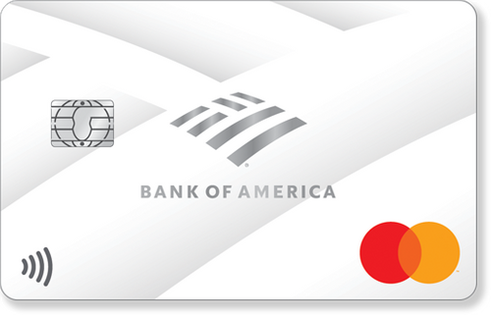
If you’re starting to fall behind on some of your bills, the BankAmericard® credit card* will afford you 18 billing cycles of 0% introductory APR on purchases and on any balance transfers made in the first 60 days (16.24% to 26.24% variable APR thereafter). As long as you make your minimum payments on time you won’t be charged interest for a year and a half. This can allow you some breathing room to shore up your finances while keeping the lights and other utilities on.
It’s important to be disciplined in this approach, as it can be easy to accrue credit card debt and fall behind. We recommend making sure you can pay off the full balance of your credit card before the introductory APR period ends to avoid this potential pitfall.
We rate credit cards using our balance transfer / Intro APR methodology for cards whose primary feature is a promotional period where new purchases or a transferred balance will accrue no or low interest for a period of time. We rank these credit cards based on the quality of their introductory offers, fees, lasting value and standard rates. Credit card issuers have no say or influence in our ratings. How we rate credit cards
- Intro Balance Transfer APR
- 0% Intro APR for 18 billing cycles for any BTs made in the first 60 days. A fee of 3% for 60 days from account opening, then 4% will apply.
- Intro Purchase APR
- 0% Intro APR for 18 billing cycles for purchases
- Regular APR
- 16.24% – 26.24% Variable APR on purchases and balance transfers
- Balance Transfer Fee
- 3% for 60 days from account opening, then 4%
If you’re starting to fall behind on some of your bills, the BankAmericard® credit card* will afford you 18 billing cycles of 0% introductory APR on purchases and on any balance transfers made in the first 60 days (16.24% to 26.24% variable APR thereafter). As long as you make your minimum payments on time you won’t be charged interest for a year and a half. This can allow you some breathing room to shore up your finances while keeping the lights and other utilities on.
It’s important to be disciplined in this approach, as it can be easy to accrue credit card debt and fall behind. We recommend making sure you can pay off the full balance of your credit card before the introductory APR period ends to avoid this potential pitfall.
We rate credit cards using our balance transfer / Intro APR methodology for cards whose primary feature is a promotional period where new purchases or a transferred balance will accrue no or low interest for a period of time. We rank these credit cards based on the quality of their introductory offers, fees, lasting value and standard rates. Credit card issuers have no say or influence in our ratings. How we rate credit cards
- Intro Balance Transfer APR
- 0% Intro APR for 18 billing cycles for any BTs made in the first 60 days. A fee of 3% for 60 days from account opening, then 4% will apply.
- Intro Purchase APR
- 0% Intro APR for 18 billing cycles for purchases
- Regular APR
- 16.24% – 26.24% Variable APR on purchases and balance transfers
- Balance Transfer Fee
- 3% for 60 days from account opening, then 4%
Just like with most utility bills, paying rent with a credit card will typically result in an additional flat fee. But the Bilt Mastercard®, issued by Wells Fargo, earns you Bilt Points on rent when you pay via the Bilt Mastercard through the Bilt app. Doing so also eliminates transaction fees for paying your rent with a credit card. You earn 1 point per dollar spent on rent for up to 100,000 points per calendar year. When you use the card 5 times each statement period, you’ll earn points on rent and qualifying net purchases. So you can earn points on your rent all year as long as your monthly rent cost is less than $8,333.33. See Bilt Mastercard rewards and benefits here.
You’ll have to pay attention to the fine print to earn these rewards on rent though: Each cardholder must complete at least five transactions on the Bilt Card in any given statement period to qualify to earn rewards, so it would be unwise to only use it to pay for rent.
Even if your rental isn’t a part of the Bilt Rewards Alliance, you can still use your Bilt Rewards card to pay your rent and earn points if your landlord accepts Venmo, PayPal, physical checks or an online payment portal. Be careful that the online payment portal doesn’t charge a fee for using a credit card that will exceed the rewards you’d earn for doing so.
We rate credit cards using our Rewards / Travel methodology for cards tailored to earning rewards. We focus on each card’s reward potential, the value you get compared to the card’s cost, the benefits and the card’s rates and fees. Credit card issuers have no say or influence in our ratings. How we rate credit cards
- Intro Balance Transfer APR
- N/A
- Intro Purchase APR
- N/A
- Regular APR
- See Terms
- Balance Transfer Fee
- Up to 5% for each balance transfer, with a minimum of $5.
Just like with most utility bills, paying rent with a credit card will typically result in an additional flat fee. But the Bilt Mastercard®, issued by Wells Fargo, earns you Bilt Points on rent when you pay via the Bilt Mastercard through the Bilt app. Doing so also eliminates transaction fees for paying your rent with a credit card. You earn 1 point per dollar spent on rent for up to 100,000 points per calendar year. When you use the card 5 times each statement period, you’ll earn points on rent and qualifying net purchases. So you can earn points on your rent all year as long as your monthly rent cost is less than $8,333.33. See Bilt Mastercard rewards and benefits here.
You’ll have to pay attention to the fine print to earn these rewards on rent though: Each cardholder must complete at least five transactions on the Bilt Card in any given statement period to qualify to earn rewards, so it would be unwise to only use it to pay for rent.
Even if your rental isn’t a part of the Bilt Rewards Alliance, you can still use your Bilt Rewards card to pay your rent and earn points if your landlord accepts Venmo, PayPal, physical checks or an online payment portal. Be careful that the online payment portal doesn’t charge a fee for using a credit card that will exceed the rewards you’d earn for doing so.
We rate credit cards using our Rewards / Travel methodology for cards tailored to earning rewards. We focus on each card’s reward potential, the value you get compared to the card’s cost, the benefits and the card’s rates and fees. Credit card issuers have no say or influence in our ratings. How we rate credit cards
- Intro Balance Transfer APR
- N/A
- Intro Purchase APR
- N/A
- Regular APR
- See Terms
- Balance Transfer Fee
- Up to 5% for each balance transfer, with a minimum of $5.
What makes a credit card good to use for utility bills?
Most utility providers will charge a fee for using a credit card to pay your utility bill. So, a good credit card will be rewarding enough to both cover the fee and make it worth your while to do so. Certain credit cards, like the U.S. Bank Cash+® Visa Signature® Card, even offer specific bonus categories for using your card to pay bills.
While it’s likely you’ll earn the majority of your monthly credit card rewards from other spending categories, the rewards earned by paying your utility bills pad the bottom line. For that reason, if you don’t plan on having one card dedicated to utilities, be sure its overall rewards structure still allows you to earn in the areas in which you spend most.
If you’re in a pinch, a credit card that offers an introductory 0% APR could also help spread out your bill payments beyond the standard 30 days. You’ll want an introductory 0% APR on new purchases rather than balance transfers. That way, you can carry your new utility payments longer without interest during the promotional period. Just make sure you’re able to pay off the bill before the promo offer ends.
Pros
Earn rewards for regular payments.
Get extra time to make a payment with an introductory purchase APR.
Automate your bill payments to lower the chance of missing one.
Build credit by paying your utility bill.
Cons
Using a credit card might result in an extra fee.
Putting off a payment could encourage a cycle of debt.
Depending on the size of your utility bills, payments could use up a considerable portion of your credit limit.
How to choose the right credit card to use for your utility bills
When it comes to choosing a good credit card to use for your bill payments, consider the card’s rewards rate and offer terms, like any spending limits or intro APR details.
Rewards
Don’t choose a card to pay utility bills that doesn’t reward you enough to cover any convenience fees. For example, if your utility bill is $100 and your provider charges a 4% fee (i.e. $4) to pay via credit card, you’ll want to make sure the card you use offers at least the same or better in rewards (a card earning 5% would be great here). If not, then you could be losing money on the transaction.
“It’s quite common for fees to be added when paying [your utilities] via credit card,” Reese said. “If [there is a fee], be sure the value of the rewards you earn is greater than the cost of the fees.”
Additionally, you’ll want the rewards to complement the rest of your regular spending. If you have to overspend or buy things you normally wouldn’t to earn rewards, the card is probably not right for you.
Lastly, check if the card has any spending limits on its reward categories. Some credit cards offer high rewards rates, but they might limit the total rewards you can earn within a billing cycle, quarter or year. If your bill payments are going to cause you to hit that limit sooner than you’d like, you may want to consider another option.
Introductory APR
Check how long a card’s introductory period is. Most range from nine to 21 months, depending on the card, so choose the one that offers enough time for you to get your finances on track.
To figure out how much time you need to pay off a balance, divide the card balance by the number of months in the promotional period. That number will be the minimum amount you need to put toward the balance each month to pay it off in time.
How to get the most from your credit card
Set up automatic payments for your utility bills. By using autopay, you can avoid paying fees for missed or late payments.
The simplest way to get the most from your credit card is to pay your bill in full each month. If you don’t carry a balance, you won’t incur any interest charges, which means the rewards you earn on your spending will go directly into your pocket. If you carry a balance from month to month, interest charges could wipe out any value you’d get from your rewards.
Alternatives to using a credit card for your utility bill
You could always pay by check, debit card or by using bill pay through your bank. None of these options likely incur an extra fee, and there are some debit cards, like the Discover Cashback Debit Account, that offer rewards. Debit rewards won’t be as high as what you’d earn from using a credit card, but it’s better than nothing.
You can set up bill pay so that your bank sends a payment to your utility or rent provider on whichever day you request. Automating the process reduces the chances of missing payments, and you won’t have to pay convenience fees.
How to apply for a credit card
Follow these simple steps to apply for a credit card:
- Find the credit card that best fits your spending habits. In this case, make sure it either earns a good flat rate for all purchases or it features a bonus category for bill payments.
- Apply securely on the credit card issuer’s website. You’ll need to provide financial and personal information including your name, address, income, Social Security number and monthly rent or mortgage payments.
- You’ll either hear back instantly with the card issuer’s decision or the issuer may reach out for clarification or to gather more information.
FAQs
If you want to earn more rewards, build your credit or get some extra time to cover the cost, using a credit card for your utility bills could make sense. But be aware of any fees your utility provider might charge and understand that you need to pay off your full credit card bill by the due date to avoid interest charges.
A convenience fee for using a credit card to pay your utility bill could be a flat fee, a percentage of your bill or a combination thereof, but it’s typically a few dollars per transaction. For example, a company may charge a flat rate of $4 for using a credit card to make a payment less than $300, and then $4 for each $300 payment increment thereafter.
Recommended Articles
Other credit cards we researched
Our methodology
CNET reviews credit cards by exhaustively comparing them across set criteria developed for each major category, including cash-back, welcome bonus, travel rewards and balance transfer. We take into consideration the typical spending behavior of a range of consumer profiles -- with the understanding that everyone’s financial situation is different -- and the designated function of a card.
*All information about the Venmo Credit Card and the BankAmericard credit card has been collected independently by CNET and has not been reviewed by the issuer.
The editorial content on this page is based solely on objective, independent assessments by our writers and is not influenced by advertising or partnerships. It has not been provided or commissioned by any third party. However, we may receive compensation when you click on links to products or services offered by our partners.




